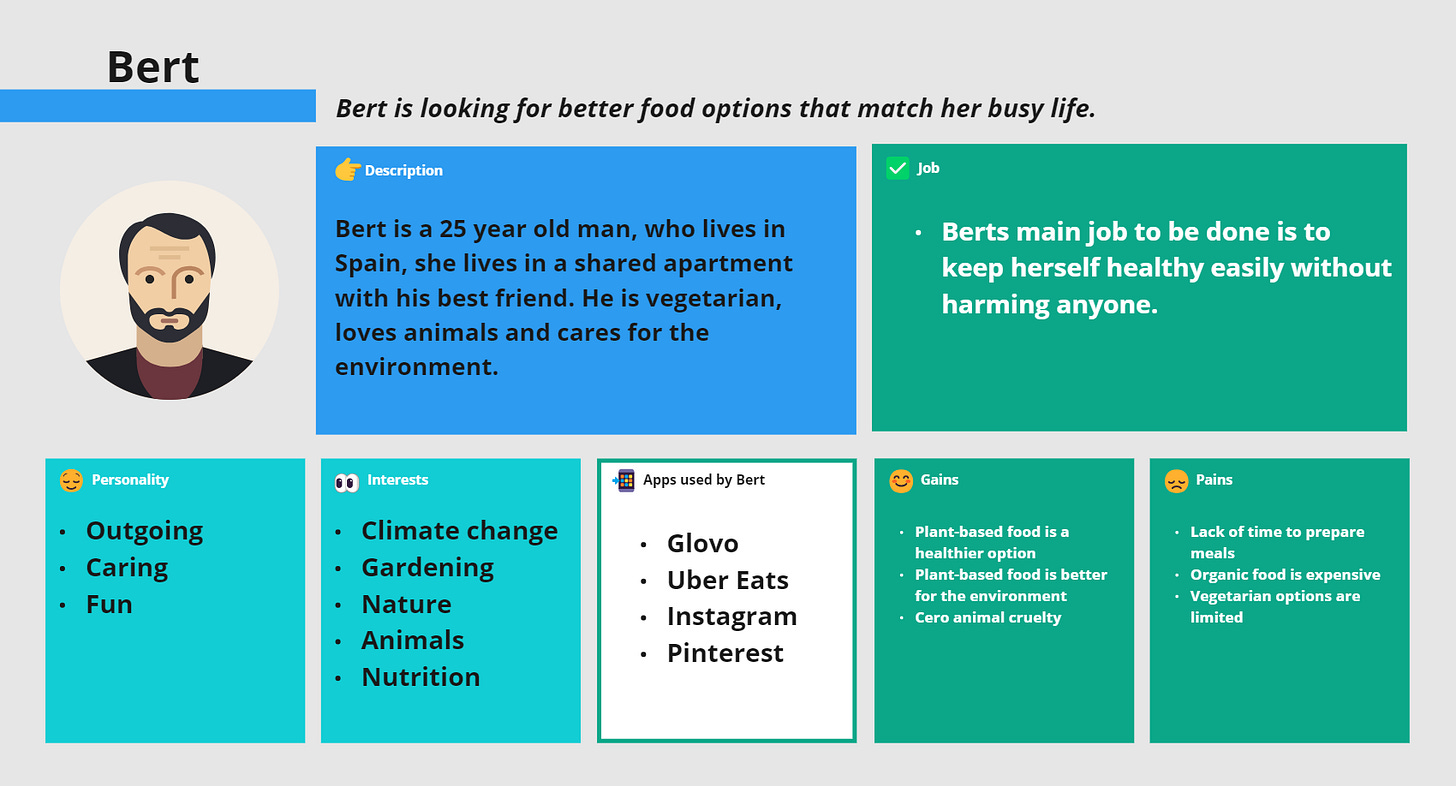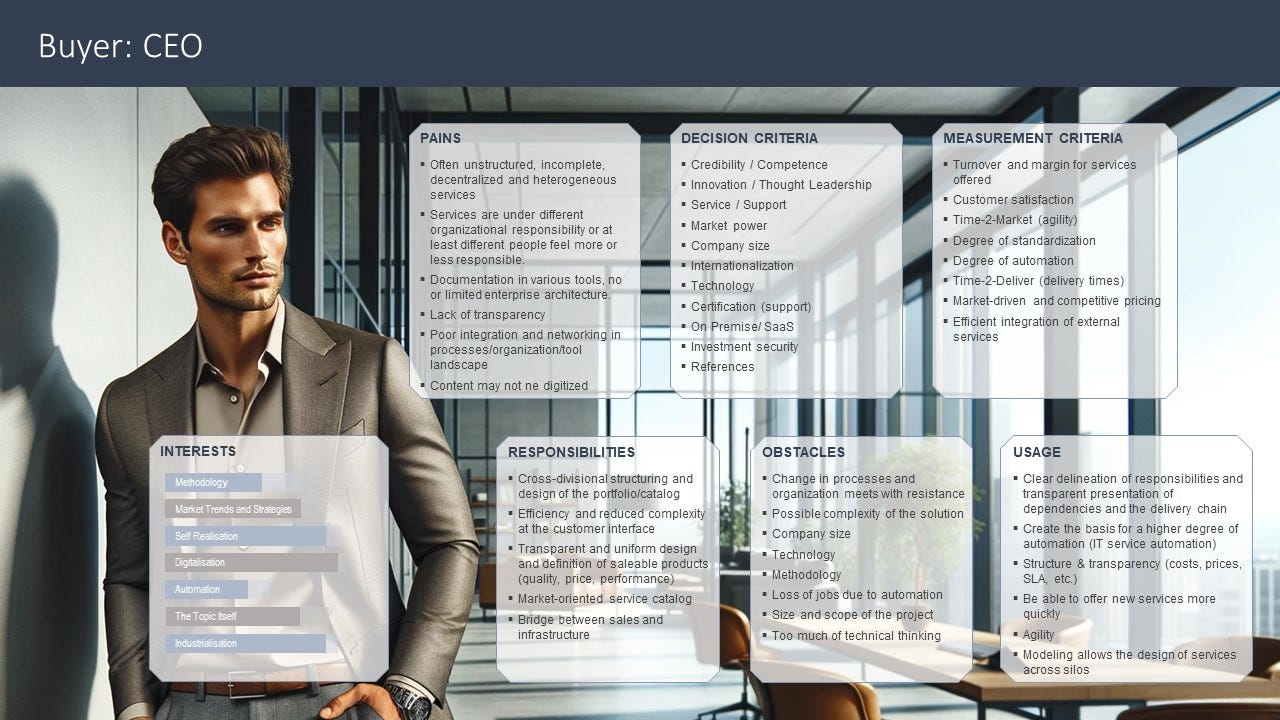Blending and Distinguishing User and Buyer for B2B Products
And why I don't like Personas at all!
In B2B, it's crucial to differentiate between the User and the Buyer, while simultaneously combining efforts to make their journeys with your company and product seamless. On the way to a customer centric approach, active stakeholder management, User and Buyer Personas, user stories, user acceptance testing and many more have caused big steps towards more sustainable business success. However, this certainly does not mean we have reached the end of the ladder.
This article is handing you some basic thoughts on the topic and specific examples for the implementation.
Why we need to Distinguish
In the realm of Business-to-Business (B2B) products, strategies employed significantly influence the success of product adoption and customer satisfaction. Traditionally and especially for B2C, Product Managers and Marketers have relied on the creation of personas to represent their target audience. However, a growing perspective suggests that archetypical descriptions of buyers and users offer a more effective approach, particularly in the B2B sector. Moreover, it's crucial to acknowledge that, despite more and more transfer of responsibility to employees, buyers and users in the B2B context often are not the same entities. A distinction that carries substantial implications for product strategies.
Detailed reasons for differentiation include::
Different Needs and Motivations: Buyers and users may have different priorities and motivations. For instance, buyers might prioritize cost and ROI, while users might focus more on usability and efficiency.
Varied Influence on Purchasing Decision: In many cases, users may have significant influence on the buying process, even if they are not the final decision-makers. Understanding both perspectives is crucial for effective marketing.
Customized Marketing Strategies: Recognizing the differences between buyers and users allows for more tailored marketing strategies, addressing each group's specific concerns and needs.
Sales is much more interested in the buyer persona and thus the attributes they are interested in vary from the ones e.g. Product Management might be interested in. Defining a specific archetype for your champions can help a lot by the way!
Why I do like Archetypes better than Personas
Personas are a step in the right direction and for the unbelievably broad B2C-market they are totally fine for me. They enable user centric design and seamless use cases. You are able to define a set of personas to cover the range of buyers/users.
For B2B this approach would mean to create a set of personas consisting of x roles times y personas, which is too much to be effectively managed. Having less differentiation may guide you into a trap when it comes to requirements and also target group specific communication.
Personas may guide you into a trap!
A true Persona, in its original meaning, is limited to the description of a specific fictional or real person. And that’s already where I see limitations. The spectrum of buyer personas and users is very broad in most cases. And, to be honest, I think they are a bit childish in the context of enterprise software.
Using Archetypes gives you the possibility to describe a spectrum regarding behavior, decision making and expectations of the product. Archetypes like designed here, can cover a range of persons. To be honest some already describe persona a bit in that manner.
Differing the Archetypes
Of course, the information you’d like to gather is not the same as in the example. As you can see with the differentiated perspectives it makes sense to also find specific attributes:
User Experience and Customer Journey
This is the area to blend the two perspectives on your customer! Seamlessness means not only a well-designed buyer or user experience, but an integrated one for both groups. Personas focus on the end-user experience of the product, whereas buyer personas concentrate on the purchasing decision process. Both are essential in crafting a product journey that is attuned to user needs and persuasive to decision-makers.
Relations and Influences - Why we also need to Blend
Examining personas without defining their context oversimplifies the complex decision-making processes in B2B transactions. They simply do not capture the multi-layered dynamics of organizational buying behavior and influences between the protagonists. Although I propagate a differentiation, of course users and buyer archetypes are influencing each other.
The simplest way to see the interdependency between Buyer and User would be the following:
But it’s not that simple. Your customer represents a system of individuals, relationships, inputs, and outputs, just as your company does. Also together in the context of the market your customer and your company represent a even bigger system and so on. This is why systems thinking is the approach to understand the complex opinion forming and decision making processes that include Buyers and Users.
If you take a look at the following example, you have to be aware that all topics and and all archetypes in that illustration are relevant to the decision making process and thus to you as a supplier. Here, the system is annotated using a simple ontology.
This is a simple task that can be done with a whiteboarding tool within minutes, but boy it will safe you a lot of time in the future!
Done
When writing this little article I thought a few times: “This is not really a topic” or “This goes to deep”, but while working on the examples I even updated the archetypes and maps we work with within my employer. So hopefully you will benefit from my and others experience!












Very helpful material for B2B product managers! Personas never worked for me in B2B either. Your separation into Users and Buyers makes a lot of sense.